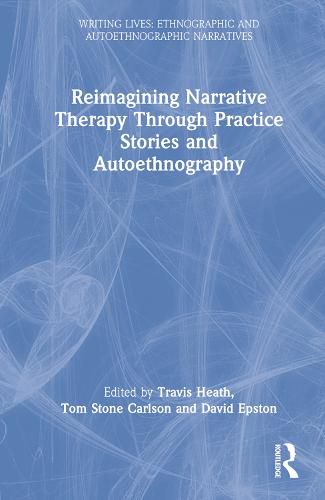Readings Newsletter
Become a Readings Member to make your shopping experience even easier.
Sign in or sign up for free!
You’re not far away from qualifying for FREE standard shipping within Australia
You’ve qualified for FREE standard shipping within Australia
The cart is loading…






Reimagining Narrative Therapy Through Practice Stories and Autoethnography takes a new pedagogical approach to teaching and learning in contemporary narrative therapy, based in autoethnography and storytelling.
The individual client stories aim to paint each therapeutic meeting in such detail that the reader will come to feel as though they actually know the two or more people in the room. This approach moves beyond the standard narrative practice of teaching by transcripts and steps into teaching narrative therapy through autoethnography. The intention of these ‘teaching tales’ is to offer the reader an opportunity to enter into the very ‘heart and soul’ of narrative therapy practice, much like reading a novel has you enter into the lives of the characters that inhabit it. This work has been used by the authors in MA and PhD level classrooms, workshops, week-long intensive courses, and conferences around the world, where it has received commendations from both newcomer and veteran narrative therapists.
The aim of this book is to introduce narrative therapy and the value of integrating autoethnographic methods to students and new clinicians. It can also serve as a useful tool for advanced teachers of narrative practices. In addition, it will appeal to established clinicians who are curious about narrative therapy (who may be looking to add it to their practice), as well as students and scholars of autoethnography and qualitative inquiry and methods.
$9.00 standard shipping within Australia
FREE standard shipping within Australia for orders over $100.00
Express & International shipping calculated at checkout
Reimagining Narrative Therapy Through Practice Stories and Autoethnography takes a new pedagogical approach to teaching and learning in contemporary narrative therapy, based in autoethnography and storytelling.
The individual client stories aim to paint each therapeutic meeting in such detail that the reader will come to feel as though they actually know the two or more people in the room. This approach moves beyond the standard narrative practice of teaching by transcripts and steps into teaching narrative therapy through autoethnography. The intention of these ‘teaching tales’ is to offer the reader an opportunity to enter into the very ‘heart and soul’ of narrative therapy practice, much like reading a novel has you enter into the lives of the characters that inhabit it. This work has been used by the authors in MA and PhD level classrooms, workshops, week-long intensive courses, and conferences around the world, where it has received commendations from both newcomer and veteran narrative therapists.
The aim of this book is to introduce narrative therapy and the value of integrating autoethnographic methods to students and new clinicians. It can also serve as a useful tool for advanced teachers of narrative practices. In addition, it will appeal to established clinicians who are curious about narrative therapy (who may be looking to add it to their practice), as well as students and scholars of autoethnography and qualitative inquiry and methods.